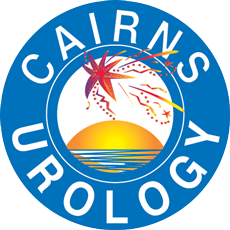






BPH
The prostate sits like a donut at the opening of the bladder with a hole in the middle. As men get older, prostates enlarge. They may enlarge outwards, giving no symptoms, or they may enlarge inwards, leading to obstruction as the prostate squeezes the pipe.
Symptoms of Bladder Outlet Obstruction
If the International Prostate Symptom Score (I-PSS) is used, a score can be given to the patient: 0-7 mildly symptomatic; 8-19 moderately symptomatic; 20-35 severely symptomatic.
It is important to determine whether the symptoms are obstructive, irritative or a combination of the two.
Surgical Treatment
There is a vast array of procedures which have been tried for the treatment of bladder outlet obstruction. They include Transurethral Microwave Thermo-therapy (TUMT), High Intensity Frequency Ultra-sound (HIFU), Holmium Laser Enucleation, Green Laser Vapourisation and Transurethral Resection of Prostate (TURP). These are all endoscopic procedures. Only TURP is described below as it is the most common, effective and well-established in the majority of Urology Departments. However, the principles of post-operative management are common to all treatments.
Transurethral Resection of Prostate
Transurethral Resection of Prostate (TURP), the traditional procedure, is safe and effective, and can be done either as Day Surgery or as inpatient surgery. The operation is carried out on a man’s prostate to relieve the symptoms, including:
The procedure is usually carried out under general anaesthesia. Sometimes the procedure may be carried out under regional anaesthesia, (spinal or epidural anaesthesia) where an injection is placed in the patient’s back so that he has no feeling of pain below the waist.The patient may be awake but should not feel any pain.
Transurethral Resection of Prostate is carried out with an endoscopic instrument passed up through the opening of the penis. The centre of the prostate gland is removed, rather like taking out the core of an apple.
It is important to note that the prostate is not completely removed. Occasionally, symptoms recur as the result of scar tissue (stricture), re-growth of prostate tissue or the development of Prostate Cancer.
A complete removal of the prostate (Radical Prostatectomy) is an operation done only for certain men with certain types of Prostate Cancer.
Call us on on 07 4041 0700 for any queries or just book an appointment
The prostate sits like a donut at the opening of the bladder with a hole in the middle. As men get older, prostates enlarge. They may enlarge outwards, giving no symptoms, or they may enlarge inwards, leading to obstruction as the prostate squeezes the pipe.
Symptoms of Bladder Outlet Obstruction
If the International Prostate Symptom Score (I-PSS) is used, a score can be given to the patient: 0-7 mildly symptomatic; 8-19 moderately symptomatic; 20-35 severely symptomatic.
It is important to determine whether the symptoms are obstructive, irritative or a combination of the two.
Surgical Treatment
There is a vast array of procedures which have been tried for the treatment of bladder outlet obstruction. They include Transurethral Microwave Thermo-therapy (TUMT), High Intensity Frequency Ultra-sound (HIFU), Holmium Laser Enucleation, Green Laser Vapourisation and Transurethral Resection of Prostate (TURP). These are all endoscopic procedures. Only TURP is described below as it is the most common, effective and well-established in the majority of Urology Departments. However, the principles of post-operative management are common to all treatments.
Transurethral Resection of Prostate
Transurethral Resection of Prostate (TURP), the traditional procedure, is safe and effective, and can be done either as Day Surgery or as inpatient surgery. The operation is carried out on a man’s prostate to relieve the symptoms, including:
- Slowness in starting
- Poor stream
- Dribbling at the end of passing urine
- Getting up at night to pass urine
- Blood in the urine
- Urinary leakage when coughing or sneezing
- Difficulty in getting to the toilet in time when the desire to go occurs
- Complete stoppage of urine (retention)
The procedure is usually carried out under general anaesthesia. Sometimes the procedure may be carried out under regional anaesthesia, (spinal or epidural anaesthesia) where an injection is placed in the patient’s back so that he has no feeling of pain below the waist.The patient may be awake but should not feel any pain.
Transurethral Resection of Prostate is carried out with an endoscopic instrument passed up through the opening of the penis. The centre of the prostate gland is removed, rather like taking out the core of an apple.
It is important to note that the prostate is not completely removed. Occasionally, symptoms recur as the result of scar tissue (stricture), re-growth of prostate tissue or the development of Prostate Cancer.
A complete removal of the prostate (Radical Prostatectomy) is an operation done only for certain men with certain types of Prostate Cancer.
Call us on on 07 4041 0700 for any queries or just book an appointment
